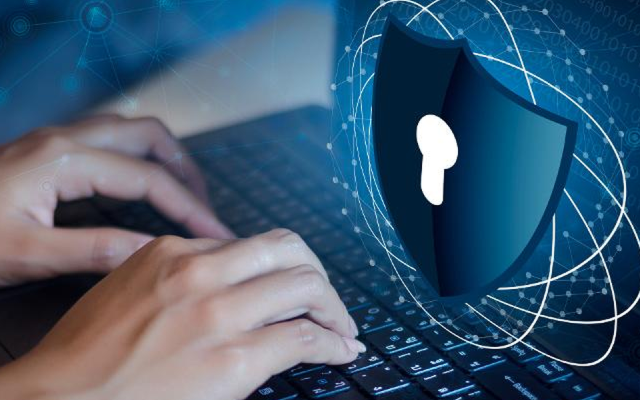E-Business
HP Top Cybersecurity Predictions for the Year

By HP Inc. Security Experts & Advisors
From ransomware pile-ons to increasingly commoditized supply chain TTPs, weaponized firmware exploits and targeted attacks on hybrid workers – the threat landscape is set to evolve at a worrying pace this year.

As 2021 drew to a close, our HP security experts and advisors reflected on what the year 2022 has in store. Here, we include insights from a range of HP security experts – including: Michael Heywood, Supply Chain Security Lead; Joanna Burkey, CISO; Dr. Ian Pratt, Global Head of Security for Personal Systems; Patrick Schläpfer, Malware Analyst; Alex Holland, Senior Malware Analyst; Julia Voo, Global Lead Cybersecurity and Tech Policy; and Michael Howard, Head of Security and Analytics Practice; alongside HP Security Advisory Board member and Partner at Deloitte, Robert Masse – identifying four key trends to look out for.
- Increasing commoditization of software supply chain attacks could result in more high-profile victims targeted
Supply chain attacks are likely to continue to present new opportunities for threat actors in 2022. According to Michael Heywood: “We’ll see supply chain attacks continue to rise in 2022 as threat actors search for weak links in software supply chains, targeting software being used widely and globally, or used by a specific company.”
As Joanna Burkey explains, this approach could create economies of scale for threat actors: “With the Kaseya breach – which impacted over 1,500 companies – we saw that supply chain attacks can be financially rewarding. This could lead to the continued commoditization of the tactics, techniques, and procedures (TTPs) used to conduct such attacks. This only adds fuel to the fire, giving threat actors more than enough motivation to exploit software supply chains this year.”
Ian Pratt says both SMBs and high-profile victims may be targeted: “Kaseya demonstrated a pathway to monetization for independent software vendor (ISV) breaches. This should be a wakeup call to all ISVs that even if their customer base doesn’t consist of enterprise and government customers, they can still be caught in the crosshairs of attackers looking to exploit their customers. Now that this blueprint is in place, we could see these types of attack become more widespread this year, targeting both SMBs and high-profile names.”
Some verticals are more likely to be targets of supply chain attacks than others, as Robert Masse explains: “Healthcare firms, as well as those in Energy and Resources (E&R), that use lots of different hardware and software from various vendors will be interesting targets for software supply chain attacks. Supply chain integrity will be vital in 2022, as attackers begin launching attacks quicker than organizations can invest in secure software development cycles.”
Organizations should also be aware of the threat posed by vulnerabilities in open-source software, as Patrick Schläpfer explains: “We’ll see an increase in open-source software packages containing malicious code. Attackers will proactively inject new threats into open-source libraries that feed into software supply chains. This could lead to more companies being compromised, regardless of whether they have a secure perimeter or good overall posture.”
- Ransomware gangs could put lives at risk and engage in ‘pile-ons’
Ransomware will continue to be a major risk this year, with victims potentially being hit more than once, as Burkey outlines: “What we’ll see will be akin to ‘social media pile-ons’, with ransomware victims repeatedly targeted by threat actors. Once an organization has been shown to be ‘soft’, others will pile-on to get their share of the action. In some instances, threat actors will hit a company multiple times in double or even triple dip extortion rackets.”
Extortion methods could also extend beyond the victim as ransomware gangs apply the pressure, comments Alex Holland: “Ransomware operators will almost certainly intensify the ways they pressure victims into paying their demands. Beyond data leak websites, attackers are using increasingly varied extortion methods, such as cold calling, and contacting customers and business associates of victim organizations.”
“Heywood highlights that ransomware gangs won’t just encrypt data, they will steal it too, turning the screws on victims: “As we have seen in 2021, threat actors will continue stealing data before encrypting devices, putting pressure on victims to pay ransoms to unencrypt systems, and prevent the release of data.”
Threat actors could also focus on specific verticals and use cases, as highlighted by Masse: “Attackers have noticed that hitting certain industries will produce a higher likelihood of payment. We could see more attacks on healthcare and E&R organizations.
“Threat actors may well target high risk devices, such as critical medical support systems and their supporting infrastructure, where the risk of significant harm will be highest and therefore a payout will come quickly. This has already started to happen in regions such as Canada, with surgeries being delayed due to ransomware attacks.”
The trend of cooperation between threat actors will continue this year too, as Pratt explains: “We’ve seen time and time again that threat actors are willing to cooperate on attacks. There is a vibrant cybercrime marketplace, empowering a criminal supply chain that enables even unsophisticated threat actors to obtain the tools and services needed to launch successful campaigns.
“Vendors may specialize in stealing credentials, creating exploits, writing email lures, or hosting backend services. The bottom line is that the availability of tools and expertise is enabling the sophistication of criminal attacks to rise.”
- Weaponization of firmware attacks will lower the bar for entry
Masse believes a lack of visibility and control over firmware security will exacerbate the issue: “Certain industries where these attacks could be more probable should start thinking about the risks posed by the weaponization of hardware-level malware and exploits.
“They are very difficult to detect even in the best-case scenario. Rogue processes and memory mapping bypasses will be hot topics in 2022, and we can also expect to see threat actors targeting CPUs, the BIOS and microcode as part of a revised kill-chain for ransomware attacks.”
Policy makers should take note of this trend and enforce change, according to Julia Voo: “The weaponization of hardware-level exploits means that policy makers must step in to develop standards that can help to improve firmware security. By working with industry through a bottom-up approach, policy makers can drive meaningful change in an area that has largely been overlooked.”
- Hybrid work and sporting events will create more opportunities to attack users
The distribution of teams within hybrid working models means identity management will continue to play a key role, as Burkey highlights: “Identity must be solid, verified and robust. Organizations need to make sure that every activity coming from an endpoint is authentic. Is it really the user conducting these activities? Are they who they say they are? Too many organizations think being behind a firewall is enough to keep an endpoint safe, but this isn’t true. In the era of hybrid work, identity management will never be more important.”
The shift to hybrid work will also continue to create problems for organizational security, says Michael Howard: “Every single employee remains a target for attackers, with the volume of unmanaged and unsecure devices creating a huge attack surface to defend.” Masse believes this could make it easier for attackers to go after high-profile staff: “Threat actors could start to target the homes and personal networks of top executives, even government officials, as these networks are easier to compromise than traditional enterprise environments.”
Phishing will remain an ever-present threat in the era of hybrid work, Pratt explains: “Employees have been using personal devices for work or corporate devices for personal tasks, like checking emails. This will continue, and it’s likely there will be an increase in phishing attacks targeting both corporate and personal email accounts. This essentially doubles attackers’ chances of launching a successful attack, so organizations need to educate the workforce on the risks of their behavior and enforce technical controls to prevent compromise.”
High-profile sporting events will also present new opportunities for attackers to target users, according to Schläpfer: “The Winter Olympics in Beijing and FIFA World Cup in Qatar give threat actors plenty of scope for exploitation. Such large events attract opportunistic attackers, be it a direct attack on organizers, sponsors, participants and fans, or as phishing lures for malware and ransomware campaigns targeted at users. Organizations and individuals alike need to be aware of the risks.”
A new approach to security is needed
“The rise of hybrid working and continued innovation from threat actors means 2022 has plenty of nasty surprises in store for enterprise security,” comments Ian Pratt. “As a result, we need to go about securing the future of work in an entirely different way. Organizations should embrace a new architectural approach to security that helps to mitigate risk and enable resilience.
“By applying the principles of Zero Trust – least privilege access, isolation, mandatory access control and strong identity management – organizations can drastically reduce the attack surface and secure the future of work.”
HP Wolf Security can help organizations defend against the plethora of new attacks and risks facing them in 2022. By combining hardware-enforced software and security features with industry-leading endpoint security services, HP Wolf Security provides defense-in-depth and enhanced protection, privacy, and threat intelligence, gathering data at the endpoint to help protect the business at large.
E-Business
GenAI Adoption Among African workers Outpace Global Peers

Africa’s workforce is embracing artificial intelligence (AI) at a faster pace than global peers, but pressure is mounting for organisations to ramp up digital skills development as generative AI (GenAI) begins reshaping roles across industries.

This is according to PwC’s Global Workforce Hopes and Fears Survey 2025, which shows a continent ready for AI-enabled transformation, but facing a narrowing window to prepare, through skills development initiatives.
The survey, covering nearly 50 000 workers worldwide and 1 753 across South Africa, Algeria, Kenya, Morocco and Nigeria, finds that African employees are already integrating AI into daily operations.
Sixty-four percent of respondents in Africa used AI tools in the past year, compared to 54% globally, and the sentiment is overwhelmingly positive. While only 17% report using GenAI every day, confidence in its benefits is high: 76% believe GenAI improves work quality, and 72% expect AI-driven productivity gains within three years.
In SA, executives are even more bullish, as 91% say AI has already lifted both productivity and work quality — a signal that leadership is pushing harder toward AI-enabled ways of working, notes the survey.
However, this optimism is coupled with rising concern about future readiness. Only 35% of African workers believe their skills will still be relevant three years from now. With GenAI expected to affect nearly half of all job roles, PwC warns that the continent’s workforce risks falling behind unless organisations accelerate large-scale reskilling.
Despite the pressures, employees are not standing still. PwC notes that African workers outperform their global peers in proactive learning, recording 15% higher participation in skills-building and receiving 6% more support from managers. This indicates that both workers and immediate supervisors recognise the pace of AI adoption and are pushing to adapt.
PwC Africa people and organisation leader, Dr Dayalan Govender, says the moment calls for decisive leadership. Organisations, he argues, must integrate AI into workforce strategies, accelerate digital adoption, and expand upskilling programmes at scale.
“Africa’s workforce is optimistic and ready for change, but leaders must accelerate digital adoption and invest in future-ready skills to convert this optimism into sustainable growth,” he says.
Beyond the technology shift, the survey captures a workforce hungry for growth but constrained by financial pressure. Many employees are preparing to make career moves: 45% plan to request a raise, and another 45% aim for a promotion in the next year. Yet household financial stability remains strained, with only a third of respondents reporting any money left over for savings.
Still, Africa’s workplaces continue to show strong foundations of trust and purpose — elements PwC believes will be critical in navigating GenAI disruption. More than 55% of workers trust management, and two-thirds say their work feels meaningful, both above global averages.
With AI adoption rising and employees motivated to reinvent their careers, PwC warns that the coming years will determine whether Africa’s early optimism translates into long-term competitiveness as GenAI transforms the world of work.
The report calls for embedding AI into workforce strategies to bridge the gap between optimism and practical adoption, scaling upskilling initiatives to prepare for GenAI disruption, and fostering trust and psychological safety to retain talent and drive innovation.
“For employers, these findings are a stark reminder that they can and should do more to help workers understand, adopt, and embrace AI’s transformative power.
“Employers may need to pay special attention to entry-level workers, nearly a third of whom say they’re worried to a large or very large extent about AI’s impact on their future, even as they’re also curious (47%) and optimistic (38%) about its long-term societal effects,” notes the report.
E-Business
Nigeria Records Highest Weekly Cyberattacks in Africa — Report

Nigerian organisations are facing the highest volume of weekly cyberattacks in Africa, according to the newly released African Perspectives on Cyber Security Report 2025 by Check Point Software Technologies Ltd., a global leader in cybersecurity solutions.

The report revealed that Nigerian firms experience an average of 4,200 attacks per week, significantly higher than the continental average of 3,153 and 60 per cent above the global average of 1,963 attacks per organisation.
The findings highlight a sharp rise in attacks across Africa, driven largely by artificial intelligence-enabled threats.
Kingsley Oseghale, country manager for West Africa at Check Point, said attackers are increasingly using AI to automate phishing, impersonation, and cloud exploitation.
“AI has become part of the attack surface,” Oseghale said. “Attackers are using it to automate phishing and identity theft at scale. The only effective response is prevention-first security that combines visibility, governance, and AI protection.”
The report noted that cybercriminals are exploiting exposed identities and misconfigured systems to target critical sectors, including finance, energy, telecoms, and government.
Identity-led intrusions, AI-generated phishing campaigns, and multi-vector ransomware are on the rise.
Across the continent, Check Point identified key trends in different markets. Nigeria is experiencing business email compromise and cloud exploitation; South Africa faces rising ransomware, smishing, and botnet infections such as Vo1d and XorDDoS; Kenya has seen ransomware targeting critical energy infrastructure; and Morocco has experienced coordinated government and education-sector disruptions via DDoS and website defacement attacks.
The report highlights five major shifts shaping Africa’s cyber risk in 2025.
Traditional ransomware has evolved into data-leak extortion, AI-generated deception is widespread, and identity has emerged as the new security perimeter.
Weak cybersecurity, the report warned, can now affect international market access under regulations such as the EU’s NIS2 Directive, making digital resilience an economic necessity.
The study urged African businesses and governments to adopt prevention-first security strategies, including continuous risk assessment, regulatory readiness, and public-private collaboration.
Oseghale emphasised that, as AI reshapes operations, cybersecurity must shift from reaction to prediction.
“The real challenge is not adopting new technology but securing the trust that underpins it,” he said.
E-Business
Jumia’s Data Shows Nigerians Turning to Digital Retail to Navigate Inflation Pressures

As Black Friday 2025 unfolds across Nigeria, new insights from Jumia’s Q3 2025 financial results reveal that more Nigerians are relying on digital retail to navigate inflation and rising living costs.

The data points to a more deliberate, value-driven shopper, one using online platforms to stretch budgets, compare options quickly, and extract more value from each purchase.
Jumia reported a 30 percent year-on-year increase in physical goods orders, while Gross Merchandise Value for physical goods rose by 43 percent.
This stronger GMV growth highlights a clear behavioural shift: consumers are assembling higher-value baskets by combining essentials with premium or long-term household items. Online retail is serving as a tool for strategic planning, not just convenience.
According to Temidayo Ojo, Chief Executive Officer of Jumia Nigeria, Black Friday now plays a more critical economic role. “Households are using digital retail to defend purchasing power. They plan their lists, compare prices instantly, and rely on the reliability and convenience that e-commerce offers,” he said.
This year’s Black Friday trends show growing demand in categories that directly support daily living. Household essentials and FMCG products are seeing significant uptake as families stock up during price drops. Home and kitchen equipment is also experiencing stronger demand as shoppers prioritise practical, durable tools. Affordable fashion and beauty products are gaining momentum as discounts make them more accessible.
Consumer behaviour in the lead-up to the sales period further reinforces this shift. Jumia recorded a notable increase in “Add to Wishlist” and “Add to Cart” activity, signalling more planning and fewer impulse purchases. The gap between GMV and order growth indicates that customers are optimising baskets using bundles, vouchers, and promo combinations, behaviours uniquely suited to digital platforms.
With inflation intensifying the need for smarter buying, trust markers on Jumia, such as verified sellers, official brand stores, ratings, and clear return policies, are becoming more central to decision-making. Authenticity and durability now outweigh the appeal of the lowest price.
Jumia’s logistics footprint is making these benefits available nationwide. Its 30,000 sqm Isolo fulfilment centre, 480 pickup stations, and 62 logistics partners ensure that customers in secondary and peri-urban cities enjoy the same deals as those in major hubs, reducing travel burdens and adding financial value.
Overall, Jumia’s Q3 data and Black Friday trends show that Nigerians are turning to digital retail as a practical, strategic response to inflation, using e-commerce to manage budgets, preserve purchasing power, and make more informed buying decisions.

 E-Business3 days ago
E-Business3 days agoNigeria Records Highest Weekly Cyberattacks in Africa — Report

 E-Business3 days ago
E-Business3 days agoJumia’s Data Shows Nigerians Turning to Digital Retail to Navigate Inflation Pressures

 News3 days ago
News3 days agoSEC to Enhance Investor Engagement with USSD Code, ISS Audio

 Broadcasting2 days ago
Broadcasting2 days agoIt is Official, DStv Confirms Termination of 16 Major Channels

 Telecom3 days ago
Telecom3 days agoAirtel Nigeria Wins Best in Technology for Development @ 2025 SERAS Awards

 Telecom3 days ago
Telecom3 days agoNigeria-South Africa Chamber Celebrates Silver Jubilee of Bilateral Trade Ties

 News3 days ago
News3 days agoFirm Detected Half a Million Malicious Files Daily in 2025

 News3 days ago
News3 days agoNEC Endorses N100Bn Overhaul of Police and Security Training Facilities



























